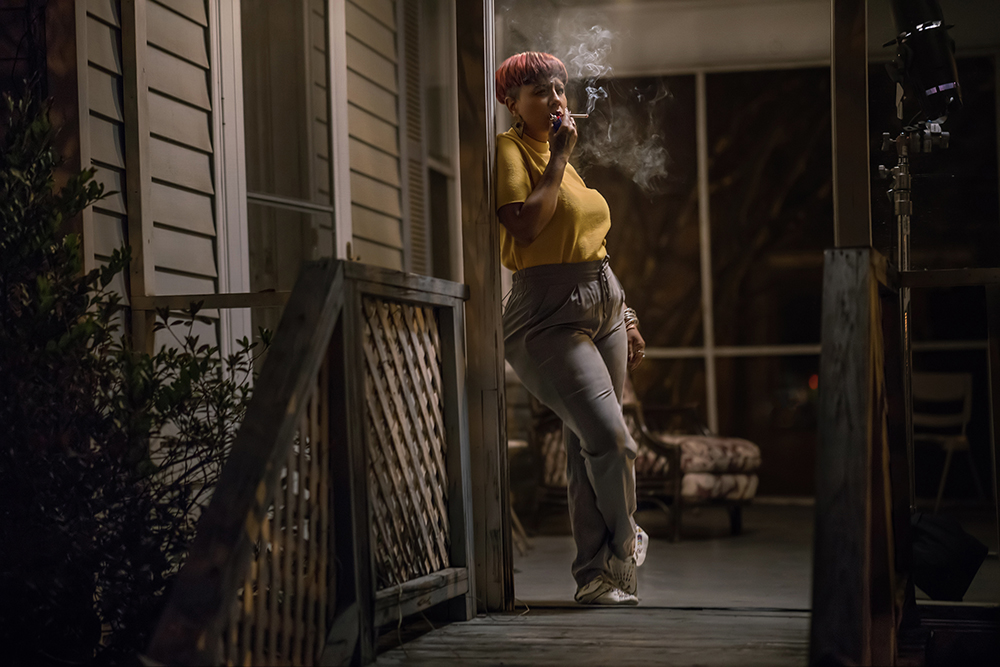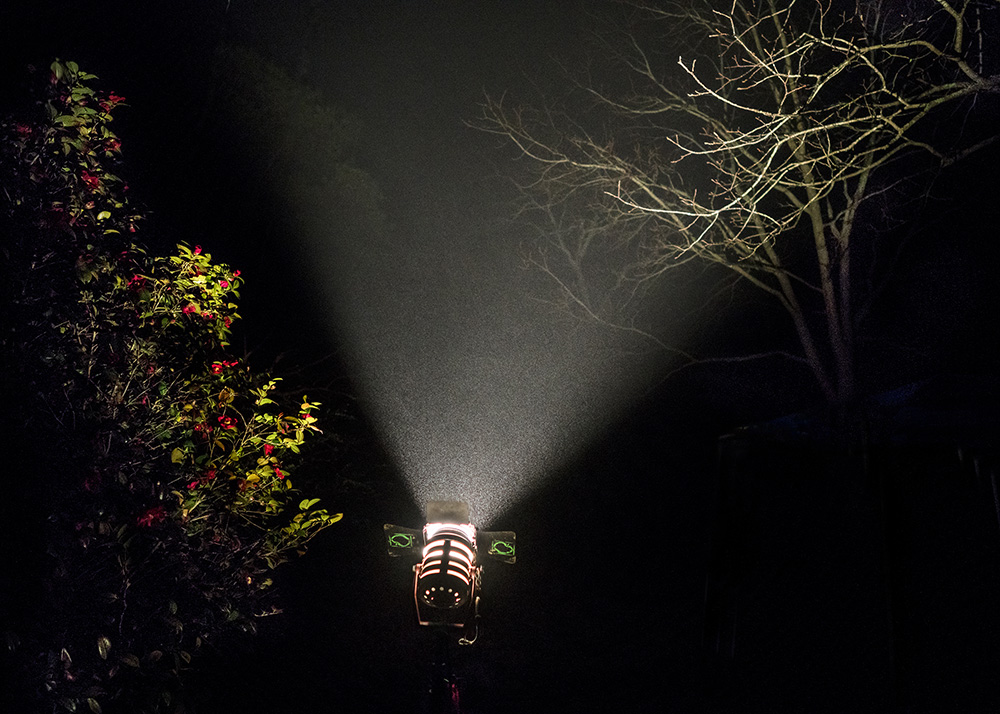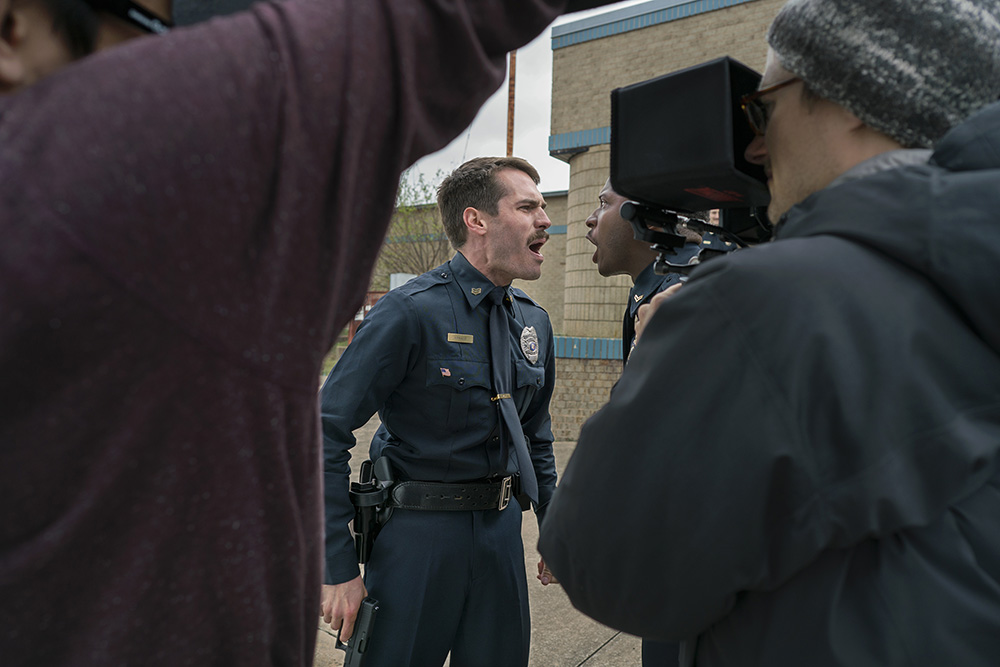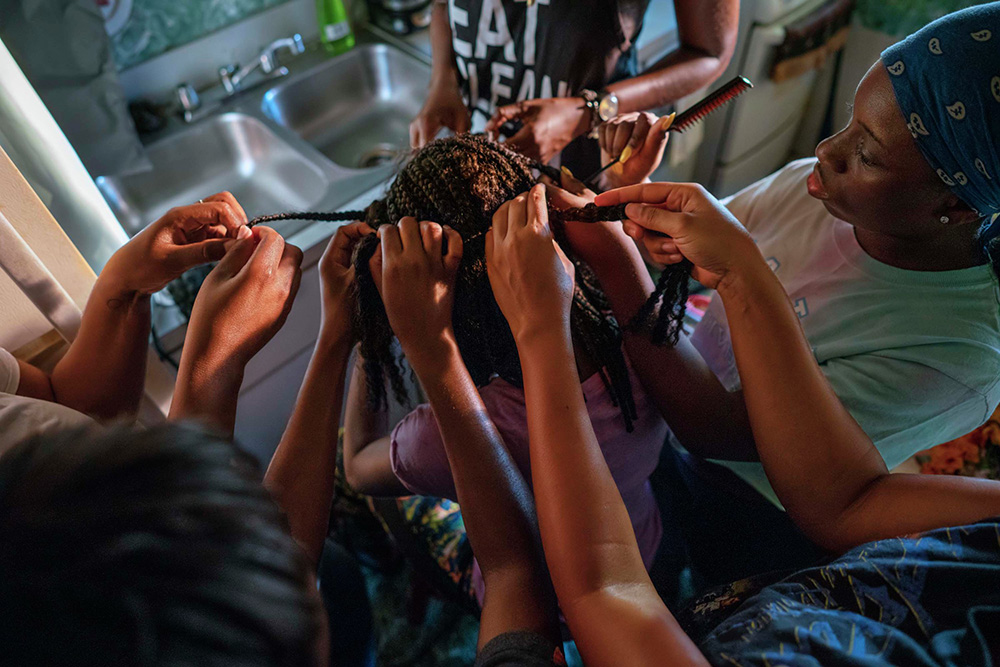
In recent years, the film industry has transformed the culture and infrastructure of Atlanta and the surrounding region. Since 2016, Georgia has had the highest number of feature films produced within its borders of any American state—a result of significant tax incentives initiated in 2002. Film sets have become such a prominent part of the region’s landscape that Atlanta’s High Museum commissioned photographer Alex Harris to capture stills of independent documentaries shot throughout the Southeast. Our Strange New Land: Photographs by Alex Harris is the latest installment in the High’s “Picturing the South” exhibition series, remaining on view through May 3. Burnaway contributor Anna Nelson-Daniel met with Alex Harris to discuss the exhibition and his involvement with the Center for Documentary Studies at Duke University.
Anna Nelson-Daniel: As someone born and raised in the South, receiving a commission as part of the “Picturing the South” series must have elicited personal associations with the theme. Beyond the actual location of where you shot these photographs, were there certain signifiers of “Southern imagery” that you sought out?
Alex Harris: I really didn’t set out thinking about what some of the symbols of the South were or how to find them. The topic is so broad that it forces someone like me to think about what it is I really want to do and how I want to spend my time. I was struck by things that I saw, perhaps, breaking the signifiers that you and I carry with us in our minds about what it means to be in the South or to be a Southerner.
A number of people have asked me, “How does your exhibit comment on the South?” More than anything else, this work looks to a new breed of narrative filmmakers in the region and what their films tell us. Often matters of race and class and sexuality are being grappled with in a way that might not have been so upfront a decade or two ago. I was in nine different states, so it was really a cross-section of Southern filmmakers—a more diverse array.
Having said that, I think we’re feeling the weight of Southern history in a way we haven’t before—discovering new narratives about our history. For example, my children didn’t know anything about the Wilmington riots, even though they attended high school in North Carolina. When I set out on this project for the High Museum, one of the films I photographed was What the River Knows. What struck me was the ability of the filmmaker to imagine herself in that moment, bringing the audience into it in a way where people are going to learn about the history.

AND: What sparked your continued interest in photographing stills of film sets after the Che assignment?
AH: It started with the memory of the kind of freedom I had on the set of Che (2008, dir. Steven Soderbergh). I’d been to Cuba and published a book called The Idea of Cuba. The producer of Che was really drawn to my work and wondered what it would be like if I could be on set actually photographing the [reenactment of the] last battle of the Cuban revolution they were filming. What struck me was the experience of having complete freedom on set to respond—not just to the main actors and extras—to what was happening behind the scenes.
For the past five years, before starting this project, I’ve been teaching in Duke University’s MFA in the Experimental and Documentary Arts program. I’ve been working with a lot of filmmakers at a moment in their lives when they’re trying to create a body of work that’s really meaningful to them. I found myself immersed in the creative process of these filmmakers, learning as a photographer. There was no exact moment, but once I came upon this idea it really clicked. I just tried to get on as many sets as I could during that period.

AND: You co-founded and teach at the Center for Documentary Studies at Duke. What might you say is different about teaching photography today that has changed over the past thirty years?
AH: In some ways, it’s easier to teach now because you can see what you’re doing immediately, but in other ways, it’s not. Students can do anything and, because they can shoot as much as they want, I think they’re much less discerning in terms of trying to figure out which images they’re most drawn to.
The Center for Documentary Studies was the brainchild of Robert Coles, who was a child psychiatrist, writer, and taught at Harvard University and Duke. He was of the notion that there are certain people, whom he admired—like novelist Eudora Welty, photographer Walker Evans, poet William Carlos Williams—who weren’t part of the canon that was being taught to students. We were able to start the Center for Documentary Studies to incorporate the work of these people into the university curricula while also providing a space for people to create work that might not otherwise be possible. Another goal was to create a home for working artists to come and make a living, where they would be able to do their work and teach at a major university. This was the first documentary center at a major American university.

A lot of students—a lot of young people—haven’t learned to use the camera in another way, which is to make a photograph that speaks to the interior life of someone, or make a photograph that’s full of mystery. Even though this is an incredibly visually literate generation, we’re asking them, in some ways, to unlearn the way that they’re using their camera and to think about the camera as a way of looking at society—and looking at themselves. This means finding out what it is that interests you about a particular subject and how to convince the viewer of that.
AND: You’ve mentioned the influence of Walker Evans. Are there any notable filmmakers you worked with, or filmmakers in general, who have shaped your process or this particular body of work?
AH: Photographer Eugene Smith claimed that a photographer’s job is to be true to oneself and to be true to the subject. If I had been photographing on just one film set—and remained there every day—my subject could have been to follow the narrative of that film. But I was on forty-one different film sets. There was no way to be true to the narrative of any individual film. What interested me was what narrative would my pictures tell altogether in an exhibition.

I would say the MFA students I worked with were an influence in terms of just immersing me in the world of what it means to make films. There’s a great 1961 film called The Misfits written by Arthur Miller and starring Marilyn Monroe. Producers invited some of the best photographers in the world—Bruce Davidson and Elliott Erwitt, among others—to come to the set and make stills in their own distinctive style. That allowed me to see what was possible on a film set, along with how extraordinary their photographs were, each one bringing something different. Some were photographing in front of the lens and some behind the lens. Some were photographing the actors and actresses just joking around relaxing.
A big part of this exhibition is a three-channel digital projection of over 200 photographs from different films. I chose a sequence of pictures where one seemed to flow into the next and they commented on each other. They take on different meanings as you see them next to one another. Experiencing this builds the viewer’s understanding and demonstrates how we created our own cinematic narrative out of my time being on set.
Our Strange New Land: Photographs by Alex Harris is on view at the High Museum of Art in Atlanta through May 3.




